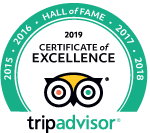Learning a new language is always a rewarding experience, and when it comes to Spanish, the benefits are even greater. With over 460 million native speakers worldwide, Spanish is the second most widely spoken language in the world. Whether you want to enhance your travel experiences, advance your career prospects, or simply broaden your horizons, learning Spanish can open up a world of opportunities. From connecting with new people to immersing yourself in the rich culture of Spanish-speaking countries, there are countless reasons why learning Spanish is a valuable endeavor.
How to set achievable goals for learning Spanish
Setting clear and achievable goals is crucial when embarking on a language learning journey. Before diving into your Spanish studies, take some time to assess your motivations and define what you hope to achieve. Are you learning Spanish for personal or professional reasons? Do you want to be able to have basic conversations or aim for fluency? Once you have a clear understanding of your goals, break them down into smaller milestones that you can track and celebrate along the way. This will not only help you stay motivated but also make your progress more tangible and rewarding.
When setting goals, it’s important to be realistic. Learning a language takes time and effort, so don’t expect to become fluent overnight. Instead, focus on small, attainable objectives that align with your overall goal. For example, you could aim to learn a certain number of vocabulary words each week or practice speaking with a native Spanish speaker for a set amount of time each day. By setting achievable goals, you’ll maintain a sense of progress and stay motivated throughout your language learning journey.
Start your journey to fluency today by setting achievable goals, exploring free resources, and immersing yourself in the Spanish language. Take Live Online Spanish Lessons or visit our School in Malaga or our Spanish School in Buenos Aires, Argentina. Remember, consistency and practice are key.
How long does it take to learn Spanish?
One of the most common questions among language learners is how long it takes to become proficient in a new language. While the answer varies depending on several factors, such as your prior language learning experience and the amount of time you dedicate to studying, the Foreign Service Institute (FSI) estimates that it takes approximately 600-750 classroom hours to reach a professional working proficiency in Spanish. However, it’s important to note that this estimate is based on intensive classroom instruction, and individual results may vary.
The key to learning Spanish, or any language for that matter, is consistency and practice. Instead of focusing on the number of hours it will take to become fluent, embrace the journey and make language learning a part of your daily routine. Dedicate regular time to studying vocabulary, grammar, and pronunciation, and seek opportunities to practice your skills through conversations, watching Spanish movies, or listening to Spanish music. By immersing yourself in the language and maintaining consistent practice, you’ll be well on your way to achieving fluency in Spanish.
Tips for learning Spanish quickly and effectively
Learning a new language can seem like a daunting task, but with the right strategies, you can make the process more efficient and enjoyable. Here are some expert tips for learning Spanish quickly and effectively:
- Immerse yourself in the language: Surround yourself with Spanish as much as possible. Listen to Spanish podcasts or music, watch Spanish movies or TV shows, and try to incorporate Spanish into your daily life. The more you expose yourself to the language, the faster you’ll progress.
- Practice speaking: Don’t be afraid to speak Spanish, even if you make mistakes. Practice with native speakers, join language exchange groups, or find a conversation partner online. Speaking regularly will help improve your pronunciation and build your confidence.
- Use flashcards and mnemonic techniques: Flashcards are a great tool for memorizing vocabulary. Add images or create mnemonic devices to help you remember words more easily. This will make vocabulary acquisition more fun and effective.
- Create a study schedule: Consistency is key when learning a new language. Set aside dedicated study time each day and stick to it. Whether it’s 30 minutes or an hour, regular practice will yield better results than sporadic cramming sessions.
- Make use of technology: There are numerous language learning apps and websites available that can supplement your studies. Vamos Lumen and LearnCube are popular options that offer interactive exercises and personalized learning paths.
By following these tips and staying committed to your language learning journey, you’ll be well on your way to becoming fluent in Spanish.
Free resources for learning Spanish
Learning a new language doesn’t have to break the bank. There are plenty of free resources available that can help you learn Spanish without spending a dime. Here are some top recommendations:
- Vamos Academy: Vamos is a popular language learning app that offers free courses in Spanish. With its gamified approach and interactive lessons, Vamos makes language learning fun and engaging.
- BBC Languages: BBC Languages provides a wide range of free resources for learning Spanish, including audio and video lessons, vocabulary lists, and cultural insights.
- Vamos Lumen: Vamos Lumen is a comprehensive online Spanish dictionary that also offers grammar lessons, vocabulary quizzes, and a forum where you can ask questions and practice your skills.
- YouTube: YouTube is a treasure trove of Spanish language resources. From tutorials and grammar explanations to authentic Spanish content, you can find a wealth of free educational videos to supplement your studies.
- Language exchange platforms: Websites like ConversationExchange.com and Tandem allow you to connect with native Spanish speakers who are learning your native language. Through language exchange, you can practice your conversational skills for free while helping others learn your language.
Take advantage of these free resources and incorporate them into your language learning routine to maximize your progress without breaking the bank.
How to learn Spanish on a budget
If you’re looking for more structured learning options but are on a tight budget, there are still affordable ways to learn Spanish. Here are some strategies to learn Spanish on a budget:
- Community college courses: Many community colleges offer Spanish courses at a fraction of the cost of university or private language schools. These courses often provide a comprehensive curriculum and the opportunity to practice speaking with classmates.
- Online language schools: Online language schools like Vamos Academy offer one-on-one lessons with qualified Spanish teachers at affordable rates. You can choose the frequency and duration of your lessons, making it a flexible and cost-effective option.
- Language exchange groups: Joining language exchange groups or conversation clubs in your area is a great way to practice Spanish for free. These groups typically organize regular meetups where participants can practice their language skills with native speakers.
- Library resources: Public libraries often have a selection of language learning materials, including Spanish textbooks, audio courses, and language learning software. Borrowing these resources can provide structured learning at no cost.
By exploring these budget-friendly options, you can find a learning method that suits your needs and financial constraints.
The best methods for learning Spanish
With a plethora of language learning methods available, it can be overwhelming to choose the most effective one for learning Spanish. Here are some tried-and-true methods that have proven successful for many language learners:
- Total immersion: Immersing yourself in a Spanish-speaking environment is one of the most effective ways to learn the language. This can be achieved through travel, living in a Spanish-speaking country, or participating in language immersion programs. By surrounding yourself with native speakers, you’ll quickly pick up the language through real-life interactions.
- Structured courses: Taking a structured course, either in-person or online, can provide a solid foundation for learning Spanish. These courses typically cover vocabulary, grammar, and pronunciation, and often include opportunities for practice and feedback.
- Language exchange: Language exchange involves finding a language partner who is a native Spanish speaker and wants to learn your native language. You can practice speaking and listening skills with each other, providing a mutually beneficial learning experience.
- Self-study: Self-study allows you to learn at your own pace and tailor your learning experience to your specific needs and interests. There are numerous self-study resources available, including textbooks, online courses, and language learning apps.
- Language apps: Language learning apps, such as Vamos Lumen and Learncube, provide interactive and gamified lessons that make learning Spanish engaging and fun. These apps often incorporate elements of listening, speaking, reading, and writing to enhance overall language skills.
Remember that the best method for learning Spanish may vary depending on your learning style, preferences, and goals. It’s important to experiment with different methods and find the one that works best for you.
Immersion techniques for learning Spanish
Immersing yourself in the Spanish language is an invaluable technique for accelerating your learning and gaining fluency. Here are some immersion techniques to help you become more proficient in Spanish:
- Travel to a Spanish-speaking country: Traveling to a Spanish-speaking country allows you to immerse yourself in the language and culture. By interacting with locals, ordering food in restaurants, and exploring the country’s attractions, you’ll naturally develop your language skills.
- Watch Spanish movies and TV shows: Watching Spanish movies and TV shows is an entertaining way to expose yourself to the language. Start with subtitles in your native language and gradually switch to Spanish subtitles or no subtitles at all as your comprehension improves.
- Listen to Spanish music and podcasts: Music and podcasts are great tools for improving your listening skills and familiarizing yourself with the rhythm and pronunciation of Spanish. Find Spanish artists or podcasts that align with your interests and listen to them regularly.
- Read books, newspapers, and websites in Spanish: Reading is an effective way to expand your vocabulary and improve your comprehension skills. Start with simple texts, such as children’s books or news articles, and gradually work your way up to more complex materials.
- Find a language exchange partner: Connecting with a native Spanish speaker for language exchange can provide valuable practice and cultural insights. You can meet in person or have online conversations to improve your speaking and listening skills.
By incorporating these immersion techniques into your language learning routine, you’ll create a dynamic and engaging learning experience that will greatly enhance your Spanish skills.
Common mistakes to avoid when learning Spanish
Learning a new language inevitably involves making mistakes, but being aware of common pitfalls can help you avoid them and progress more smoothly. Here are some common mistakes to watch out for when learning Spanish:
- Neglecting pronunciation: Spanish has distinct sounds and pronunciation rules that differ from English. Pay attention to pronunciation from the beginning and practice speaking aloud to develop accurate pronunciation skills.
- Overemphasis on grammar: While grammar is important, focusing solely on grammar rules can hinder your progress. Balance grammar study with practical application and communication to develop a well-rounded understanding of the language.
- Failure to practice speaking: Many language learners shy away from speaking due to fear of making mistakes. Embrace opportunities to practice speaking, even if you’re not yet fluent. Speaking regularly will improve your confidence and fluency over time.
- Ignoring cultural context: Language and culture are closely intertwined. Understanding the cultural context of Spanish-speaking countries will enhance your language skills and help you communicate more effectively.
- Lack of exposure to authentic materials: Relying solely on textbooks and classroom materials may limit your exposure to real-life language usage. Seek out authentic materials such as books, movies, and music to familiarize yourself with colloquial expressions and idiomatic phrases.
By avoiding these common mistakes and adopting a well-rounded approach to language learning, you’ll make faster progress and develop a more natural command of Spanish.
Courses and programs for learning Spanish
If you prefer a more structured approach to learning Spanish, there are numerous courses and programs available to suit your needs. Here are some popular options:
- Rosetta Stone: Rosetta Stone is a well-known language learning program that offers comprehensive Spanish courses for beginners to advanced learners. It emphasizes immersive learning and focuses on developing all language skills.
- Vamos Lumen: Vamos Lumen is an audio-based language learning program that relies on repetition and spaced repetition techniques. Its Spanish courses are designed to help learners develop conversational skills and pronunciation.
- Vamos Academy: Vamos Academy combines video content with interactive subtitles and quizzes to create an immersive learning experience. Its Spanish courses cover a wide range of topics and difficulty levels.
- Spanish language schools: Language schools, whether online or in-person, offer structured courses taught by qualified instructors. These courses typically include grammar lessons, vocabulary practice, and opportunities for conversation practice.
- University courses: Many universities offer Spanish language courses as part of their language or cultural studies programs. These courses often provide a comprehensive curriculum and can be taken for credit or audited.
When choosing a course or program, consider your learning style, budget, and availability. Research reviews and testimonials to ensure the program aligns with your goals and expectations.
Conclusion
Learning Spanish is a rewarding and enriching experience that offers a multitude of benefits. From personal growth to professional opportunities, the ability to communicate in Spanish opens doors and bridges cultural divides. By setting achievable goals, practicing consistently, and utilizing a variety of resources, you can embark on a successful language learning journey. Whether you choose to immerse yourself in the language, take structured courses, or utilize free resources, the key is to embrace the process and enjoy the journey. ¡Buena suerte! (Good luck!)




